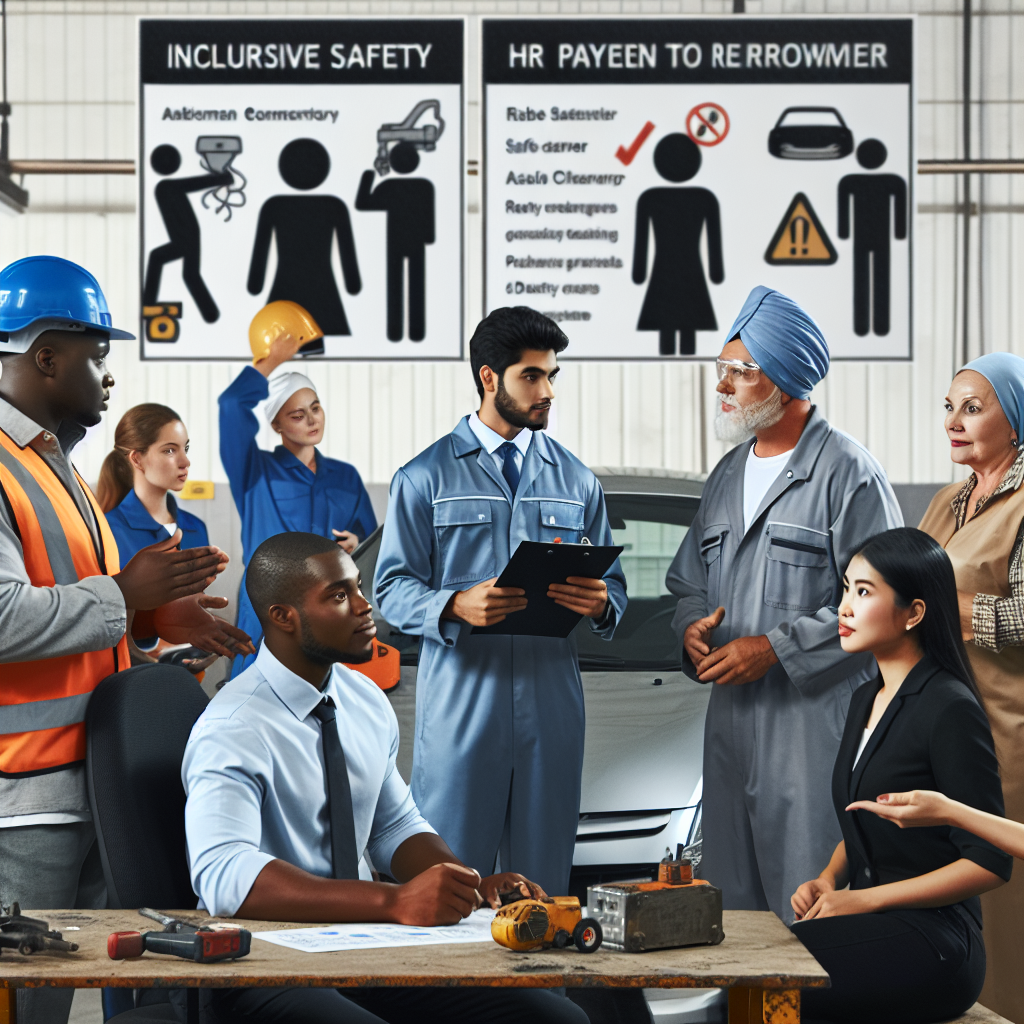Identifying Hazards in the Workplace
Understanding Common Workplace Hazards
In my experience, the first step in ensuring safety is understanding what hazards might be lurking in an auto detailing shop. Think about the products we use every day: strong detergents, waxes, and solvents. These materials can release vapors that, let’s be real, aren’t the best to breathe in. It’s crucial to have proper safety data sheets for every chemical on hand so employees know the risks.
Moreover, slip hazards from wet floors after washing cars are another biggie. I can’t tell you how many times I’ve nearly gone down like a ton of bricks just because a floor wasn’t properly marked or cleaned. Regular inspections and maintenance are key here; it’s all about creating a safe environment.
Don’t overlook the tools that we use. From polishers to vacuum cleaners, the equipment can be dangerous if mishandled. A thorough understanding of how to use these tools safely is a must, and that’s where training comes into play.
Comprehensive Safety Training Programs
Setting Up Training Programs
Okay, here’s the thing: I believe training is everything when it comes to workplace safety. Implementing a solid training program helps everyone understand the importance of safety right from the get-go. In my past experiences, I’ve found that hands-on training sessions make a lasting impact. Let’s get everyone involved and make it interactive!
Consider inviting experts or safety consultants to conduct these sessions. Having someone come in with authority and experience can really drive home the importance of safety practices. I remember when a safety consultant came to our shop, and it completely changed how my team looked at safety.
Also, it’s important to create a culture where safety training doesn’t feel like a chore. Keep it engaging! Maybe make it fun with quizzes or even small competitions that emphasize safe practices. Employees are more likely to remember information if they actually enjoy the process.
Creating Safety Protocols and Procedures
Establishing Clear Protocols
When talking about creating safety protocols, I often emphasize the need for clarity. Everyone should know what to do in case of an emergency. I remember drafting protocols and making sure they were visible around the workplace—post them on walls or create a ‘safety handbook’ everyone can refer to.
Don’t forget to regularly review these protocols! Things change in business, and sometimes, we forget that our safety procedures should evolve too. Regular meetings to discuss these can keep the dialogue open, allowing everyone to contribute their thoughts on safety improvements.
Moreover, it’s important that these protocols cover everything—from personal protective equipment (PPE) to emergency exits. I can’t stress enough how important it is for employees to feel prepared and informed about what to expect in any scenario.
Encouraging a Safety-First Culture
Fostering Open Communication
Creating a culture that prioritizes safety is not just about rules; it’s about building trust. Open communication is key! Encourage employees to voice their concerns without fear of judgment. When they know their input matters, they’re more likely to report unsafe conditions and practices.
I love hosting regular safety meetings where everyone can share their experiences and suggestions. This isn’t just a top-down approach—everyone gets to contribute. Plus, it builds camaraderie when we all rally together for a common cause.
Being approachable as an HR person helps too! Employees should feel comfortable discussing safety with me anytime, not just during formal meetings. You’d be surprised at the insights they can offer once they feel like their voice matters.
Regular Safety Audits and Assessments
Conducting Routine Audits
One thing I learned down the road is that regular audits can save a ton of headaches later. I make it a routine to conduct safety audits every few months. These audits help identify any new hazards and ensure that safety measures are being followed. Trust me, you don’t want to wait for accidents to happen before you take action.
During these audits, I check for compliance with established protocols. It’s not a witch hunt at all—it’s about ensuring that everyone is safe and that we’re doing our best to keep it that way. If something’s off, it’s the perfect opportunity to address it as a team.
Lastly, after every audit, I compile findings and turn them into action items. It’s not just about identifying issues but actually laying down what we need to do to fix them. Again, transparency here is super important, so everyone knows what’s going on.
Conclusion
As you can see, ensuring workplace safety in auto detailing doesn’t have to be daunting. With a focus on identifying hazards, training, creating protocols, fostering safety culture, and regular assessments, we can make a difference. It’s about nurturing an environment where everyone feels safe, valued, and able to do their best work.
FAQ
1. What are some common hazards in auto detailing businesses?
Common hazards include exposure to chemicals, slip and fall risks from wet floors, and potential injuries from tools and equipment.
2. Why is safety training important?
Safety training is crucial as it educates employees on proper practices, encourages a culture of safety, and can significantly reduce accidents in the workplace.
3. How often should safety audits be conducted?
It’s recommended to conduct safety audits every few months to ensure ongoing compliance with safety protocols and address any new hazards.
4. What role does HR play in ensuring safety?
HR is responsible for developing safety protocols, training programs, and fostering open communication regarding safety concerns among staff.
5. How can a safety-first culture be established?
A safety-first culture can be established by encouraging open communication, involving employees in safety discussions, and regularly reviewing safety protocols together.



